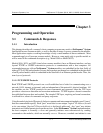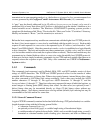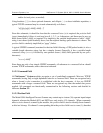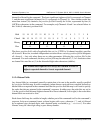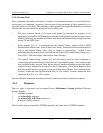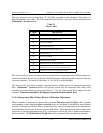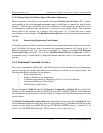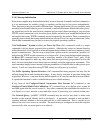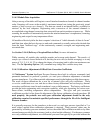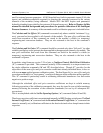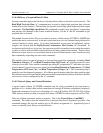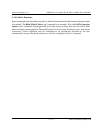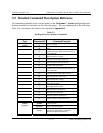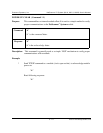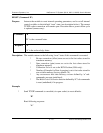
Pressure Systems, Inc. NetScanner™ System (9016, 9021, & 9022) User’s Manual
www.PressureSystems.com
3 - 8
3.1.4.1 Startup Initialization
Since power supplies may be distributed widely across a network of modules and host computer(s),
it is not uncommon for modules (singly or together) and the host to lose power independently.
Thus, their power may be restored at different times. Startup initialization, for every module, must
normally be performed when its power is restored, as each module enters default states after power-
up, which may not be the state the host computer had previously been operating in. Any previous
TCP/IP socket connection is also lost after power failure and must be re-established between host
and module before any TCP/IP commands can be recognized by the module. These commands are
generally used to detect that startup initialization has occurred (or to force reset at other times), after
which other commands may be used to restore the original operating condition.
With NetScanner
™
System modules, the Power-Up Clear (‘A’) command is used as a simple
command to elicit a known response from a module. Although this causes no internal function
within the module, it will result in an acknowledgment being returned to the host computer to verify
proper communications. The best way to detect that a power reset has occurred in a module is to
notice that the TCP/IP socket connection is no longer valid. At any point during module operation,
the Reset (‘B’) command may be used to return any module to its default “reset” state. If the
module is then required to enter any other states (that were previously programmed for it by the
host), the host must then restore these states accordingly using the appropriate commands. This
reset command simply returns internal software parameters to a default state (as after power up or
reboot). It will not close the existing TCP/IP socket (as will power up or reboot).
The Set/Do Operating Options/Functions (‘w’) command has many purposes, but may first be
utilized during the module initialization stage. It may also be executed at any time during data
acquisition. However, some non-factory-default options of ‘w’ may become the new reset default,
if a particular function is used to establish them in non-volatile memory.
If any form of the Configure/Control Autonomous Host Streams (‘c’) command or the
Configure/Control Multi-Point Calibration (‘C’) command was in use before reset, it must be
executed again after the reset to restore it. Any other command, that establishes the module in a
non-default reset state, must be re-executed after a reset, if processing is to continue in that state.
The Network Query (“psi9000”) UDP/IP command may be used (at any time) to make each
module on the network identify itself to the host(s). A parameter, returned in each module’s
response, indicates whether or not a module still has a valid connection. This is a useful way to
detect if an overt reset occurs in a module. The module may be configured to emit this response
automatically after any reset (power on or reboot).




